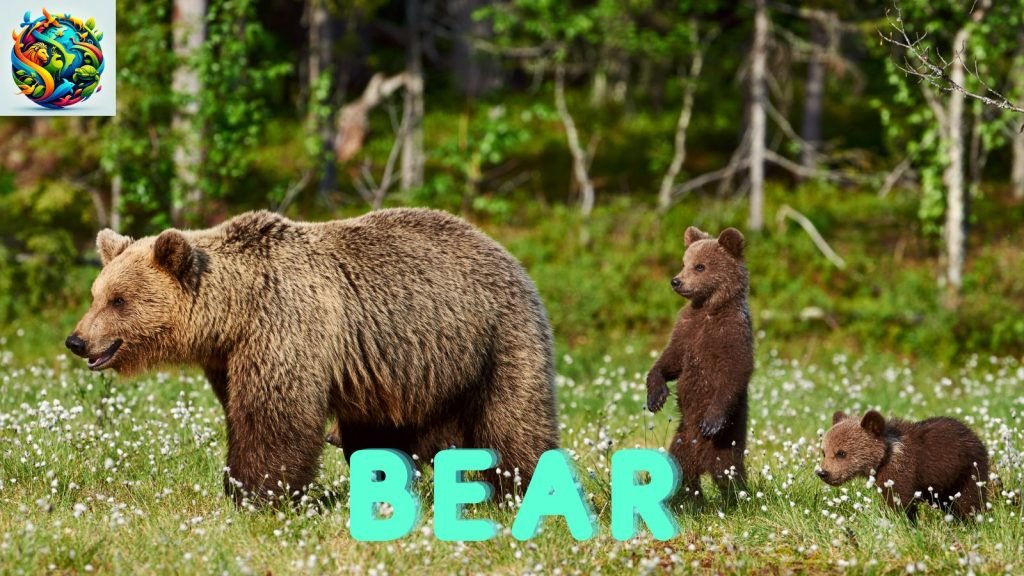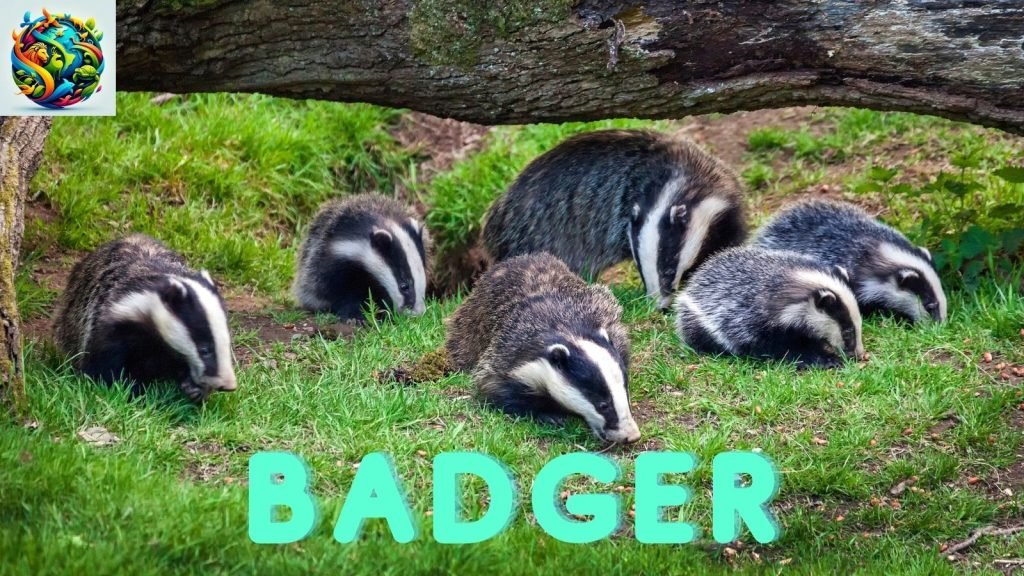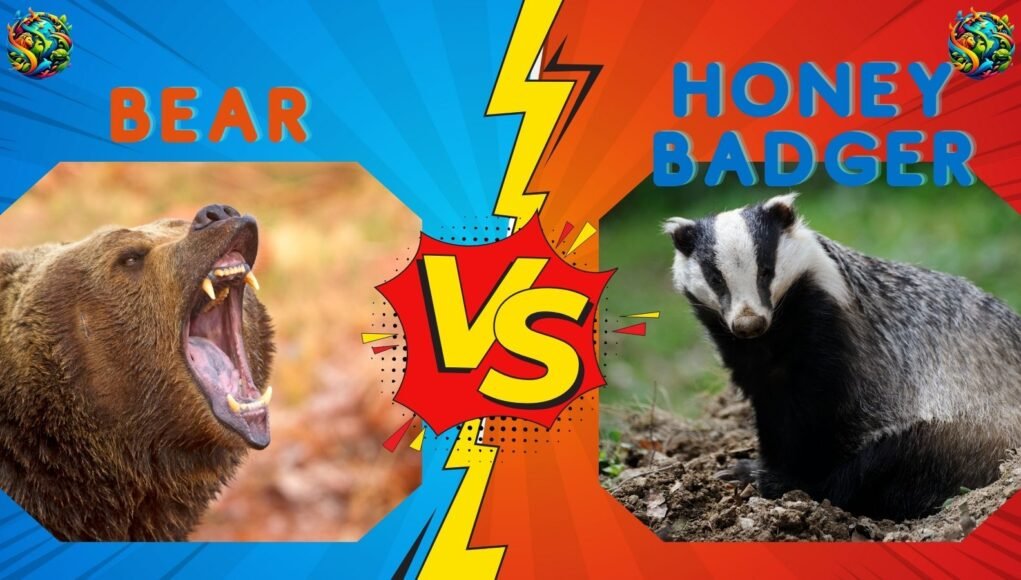Bear vs Honey Badger: A Fierce Showdown of Strength, Ferocity, and Relentless Survival
The bear vs honey badger matchup is a fascinating clash between two of the most tenacious and fearless animals in the wild. On one side, we have the bear, a powerful and intelligent predator known for its strength, claws, and adaptability. On the other side, we have the honey badger, a small but ferocious mammal renowned for its toughness, aggression, and ability to take on much larger opponents. This battle raises intriguing questions: Would the bear’s size and strength give it the upper hand? Or would the honey badger’s ferocity and resilience prove too much for the bear? Let’s dive into this epic showdown and analyze the strengths and weaknesses of each contender.

Basic Overview of the Two Competitors
The Bear
Bears are large, powerful mammals known for their strength, intelligence, and adaptability.
- Scientific Name: Ursus spp. (e.g., Brown Bear: Ursus arctos)
- Size: Bears vary in size depending on the species, but the largest, such as the Kodiak bear, can weigh between 330 and 1,500 pounds (150–680 kg) and stand 5 to 10 feet tall when upright.
- Habitat: Bears are found in forests, mountains, tundras, and coastal areas across North America, Europe, and Asia.
- Diet: Bears are omnivorous, feeding on berries, fish, small mammals, and occasionally large prey like deer or moose.
- Social Behavior: Bears are mostly solitary animals, except during mating season or when raising cubs.
- Speed: Bears can run at speeds of up to 35 miles per hour (56 km/h) in short bursts.
- Bite Force: Bears have a bite force of approximately 1,200 psi (Brown Bear).
- Defensive Traits: Bears have thick fur, a layer of fat, and powerful forelimbs with sharp claws for defense and attack.
The Honey Badger

The honey badger is a small but incredibly tough and aggressive mammal, known for its fearlessness and ability to take on much larger opponents.
- Scientific Name: Mellivora capensis
- Size: Honey badgers weigh between 15 and 35 pounds (7–16 kg) and measure 2 to 3 feet in length, including their tail.
- Habitat: Honey badgers are found in grasslands, savannas, and forests across Africa, the Middle East, and India.
- Diet: Honey badgers are omnivorous, feeding on small mammals, birds, insects, and fruits.
- Social Behavior: Honey badgers are mostly solitary animals, except during mating season or when raising cubs.
- Speed: Honey badgers can run at speeds of up to 19 miles per hour (30 km/h) in short bursts.
- Bite Force: Honey badgers have a bite force of approximately 200 psi, which is relatively weak compared to predators.
- Defensive Traits: Honey badgers have thick, loose skin that is difficult to penetrate, sharp claws, and a high pain tolerance. They are known for their ferocity and ability to fight off much larger predators.
Key Comparisons: Bear vs Honey Badger
1. Size & Strength
Bears are significantly larger and stronger than honey badgers, with some individuals weighing up to 1,500 pounds. However, honey badgers are incredibly tough and have a high pain tolerance, making them difficult to subdue.
Winner: Bear (in size and strength), Honey Badger (in toughness and resilience)
2. Speed & Agility
Bears are faster and more agile than honey badgers, capable of running at speeds of up to 35 miles per hour. Honey badgers, while slower, are highly agile and can move quickly in short bursts.
Winner: Bear
3. Intelligence & Strategy
Bears are highly intelligent and use problem-solving skills and strategic thinking to hunt and defend themselves. Honey badgers, while not as intelligent, are highly aggressive and use their toughness and ferocity to defend themselves.
Winner: Bear
4. Offensive & Defensive Weaponry
Bears have sharp claws, powerful jaws, and a bite force of 1,200 psi, which they use to deliver fatal bites and slashes. Honey badgers, on the other hand, have sharp claws and teeth that they use to deliver powerful bites and slashes. However, the bear’s superior strength and weaponry give it the advantage.
Winner: Bear
5. Fighting Style
Bears rely on their strength, claws, and intelligence to overpower opponents. They can stand on their hind legs to intimidate and strike with their forelimbs. Honey badgers, on the other hand, use their toughness, ferocity, and sharp claws to defend themselves, often attacking relentlessly until their opponent gives up.
Winner: Bear (in most cases), Honey Badger (if it can land a powerful bite or slash)
Fight Scenarios: Bear vs Honey Badger
Scenario 1: One-on-One Battle on Land
In a one-on-one battle on land, the bear would use its speed and agility to try to outmaneuver the honey badger. It would attempt to deliver powerful blows with its forelimbs and claws, targeting the honey badger’s neck or flanks. The honey badger, in turn, would use its sharp claws and teeth to strike back. However, the bear’s size and strength would likely give it the upper hand, allowing it to overpower the honey badger.
Winner: Bear
Scenario 2: One-on-One Battle in Water
In water, the bear would have a slight advantage due to its swimming ability. Honey badgers are capable swimmers but are not as agile in water as bears. The bear could use its speed and strength to overpower the honey badger in this environment.
Winner: Bear
Scenario 3: Bear vs Honey Badger Pack
In a scenario where a bear faces multiple honey badgers, the outcome would be more balanced. Honey badgers are solitary animals but may cooperate when defending themselves. While the bear could take down a few honey badgers, it would eventually be overwhelmed by their numbers and ferocity.
Winner: Honey Badger Pack
Final Verdict: Who Would Win?
After analyzing every aspect of the bear vs honey badger battle, here’s the final breakdown:
| Category | Winner |
|---|---|
| Size & Strength | Bear |
| Speed & Agility | Bear |
| Intelligence & Strategy | Bear |
| Bite Force | Bear |
| Weapons (Claws, Strength) | Bear |
| Combat Strategy | Bear (strength and intelligence), Honey Badger (ferocity and resilience) |
| Survival Skills | Bear (versatility), Honey Badger (toughness) |
Ultimate Winner: Bear in One-on-One Combat, Honey Badger Pack in Group Combat
- In a one-on-one battle, the bear wins 90% of the time due to its size, strength, and agility.
- In a pack scenario, honey badgers could overwhelm the bear with their numbers and ferocity.
Conclusion
The bear’s size, strength, and agility make it a dominant predator in one-on-one combat. However, the honey badger’s toughness, ferocity, and resilience give it a significant advantage in group scenarios. While the bear is likely to dominate in most one-on-one encounters, the honey badger’s unique adaptations and defensive tactics make it a formidable opponent. This matchup highlights the fascinating dynamics of predator-prey interactions and the importance of both individual strength and unique adaptations in the animal kingdom. Whether it’s the bear’s raw power or the honey badger’s relentless aggression, this battle reminds us of the incredible diversity of nature’s most tenacious creatures.





Appreciating the dedication you put into your blog and in depth information you offer. It’s nice to come across a blog every once in a while that isn’t the same outdated rehashed material. Great read! I’ve bookmarked your site and I’m adding your RSS feeds to my Google account.
I’m still learning from you, while I’m trying to reach my goals. I definitely liked reading all that is written on your blog.Keep the aarticles coming. I liked it!